
A living privacy fence is an attractive alternative to walls, timber panels or other solid structures. In urban or suburban areas dominated by concrete, glass and metal, this burst of lush foliage or flowers can be a welcome respite. While in more rural settings, this style blends with the natural surroundings.
Living privacy fences that look good too can vary between rows of topiary evergreens and traditional privet or boxwood hedges to colorful shrubs and small trees.
These living fences not only define boundaries beautifully, they will act as a windbreak to protect structures and benefit wildlife too.
1. Thuja Green Giant (Thuja plicata x standishii 'Green Giant')
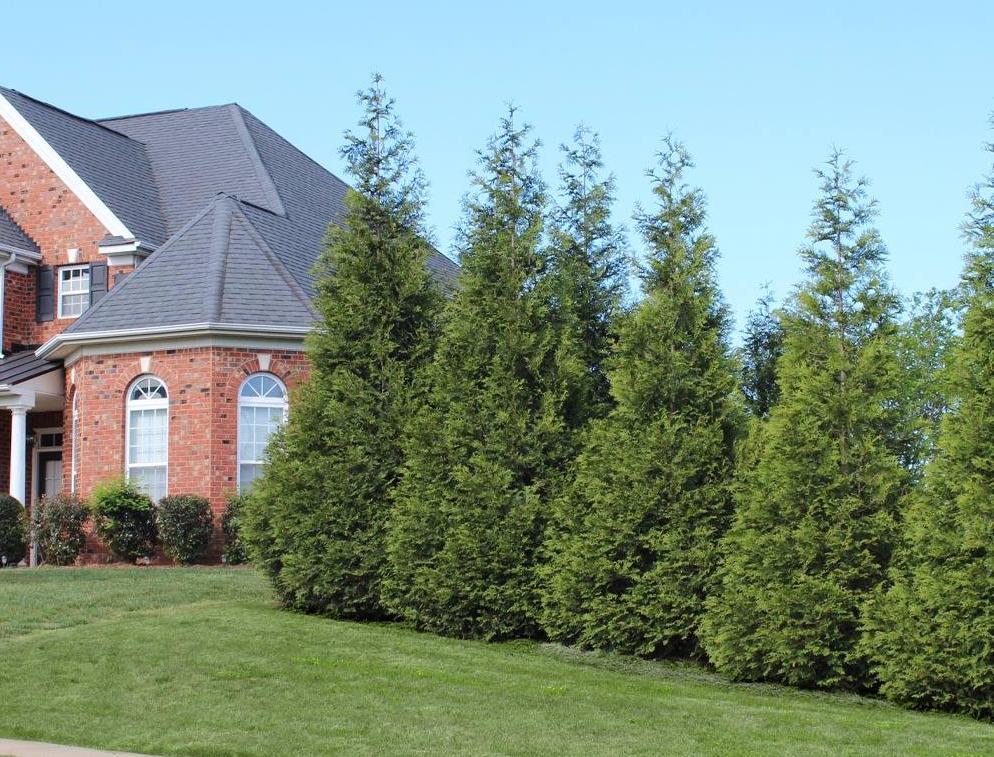
The Thuja Green Giant is one of the best trees for privacy, can be grown in almost any soil and won't be phased by ice and snow. These hardy trees can grow up to 30-50 feet - and at a rate of three to five feet a year once established. However, you do have some control over the height depending on how far apart you space the trees when you plant them.
The more room they have the taller they will grow. Whatever you decide, you can expect a statuesque privacy screen if you opt for the Thuja Green Giant.
'When it comes to growth, these trees are movers,' says Tamara Hogan, a plant expert at Fast Growing Trees. 'Although, they do need to establish first before they take off and they'll do best in zones 5-8.'
'The first year is all about roots so you might not see much growth the first year. Come the next two years, you'll start to see more growth. Green Giants are definitely a sleep, creep, leap kind of growth pattern. It's a great speedy tree that does well in straight or staggered planting rows and only requires a little pruning when needed.'
2. Spartan Juniper Trees (Juniperus chinensis 'Spartan')
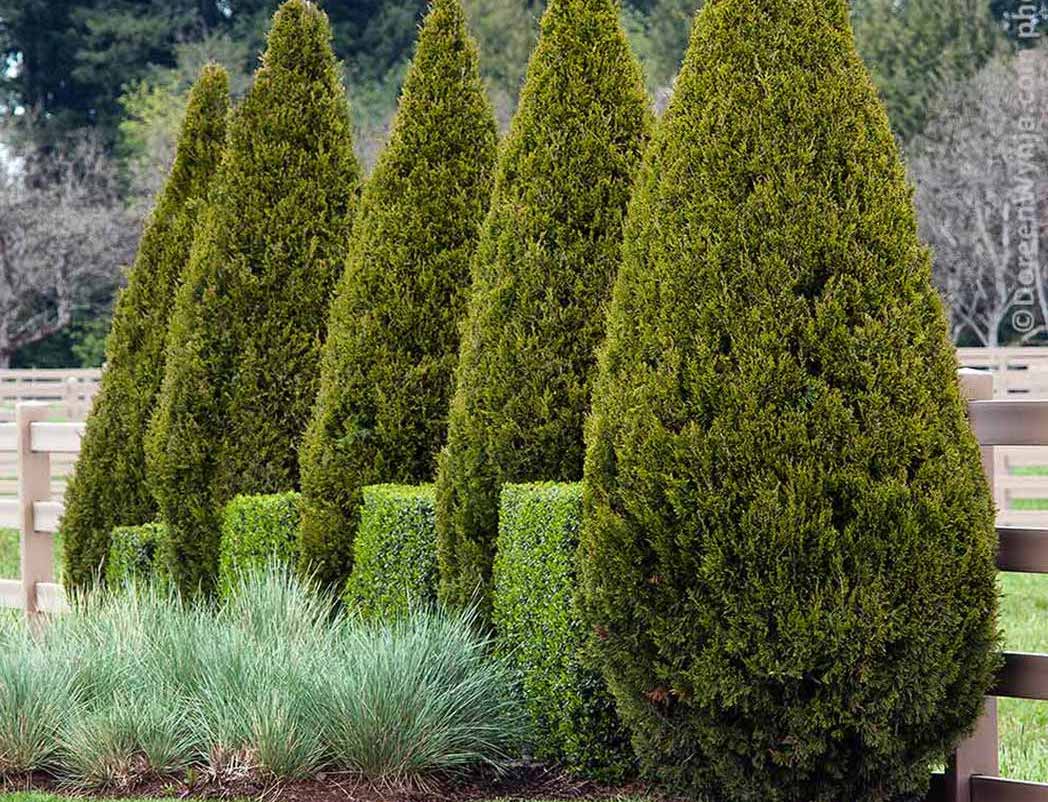
These elegant evergreen trees have a natural columnar shape which gives them a topiary style without any shears being involved. However, if you are feeling creative, they are great trees for clipping into ornamental shapes too.
Left to grow, Spartan Junipers will reach a mature height of 15-20 feet with a four to five feet width. They can create a natural wind break, helping to protect nearby structures, as well as provide privacy.
'Junipers can take the heat and can handle a range of soil conditions,' says Tamara. 'These are great for privacy fences in areas that have tougher conditions or for smaller spaces with close neighbors.
'Due to its natural pyramidal growth, it doesn’t need much maintenance and will do well in zones 5-9 in a well-drained soil.'
3. Forsythia (Forsythia x intermedia)
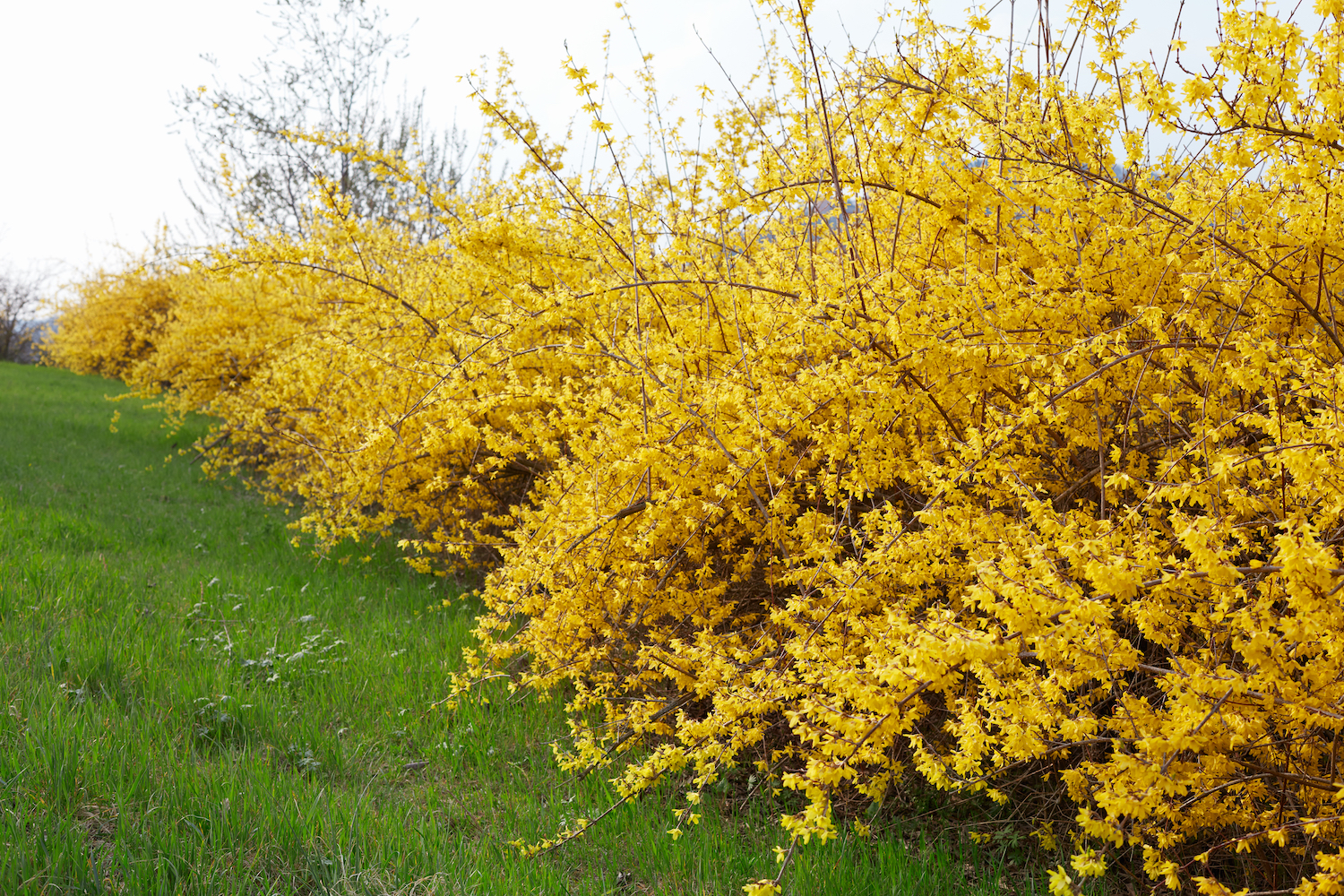
Forsythia is loved for its mass of sunny yellow flowers, which appear each spring. It's easy to grow, tolerates a range of soils and can be grown as a stand-alone shrub or as a hedge. The Lynwood Gold is a good choice for the latter.
This plant also provides another glorious show of color in the fall, when its leaves turn yellow with hints of orange and red.
The Lynwood Gold is a fast growing hedge for privacy at around two to four feet per year, so you'll have a spectacular screen in a short space of time.
'Plant these shrubs in well-draining soil at around four feet apart for a privacy hedge,' says Tamara. 'It likes a minimum of four hours sunlight each day but can tolerate some shade and will grow well in zones 5-8.'
4. Tri-color Dappled Willow (Salix integra 'Hakuro-nishiki')
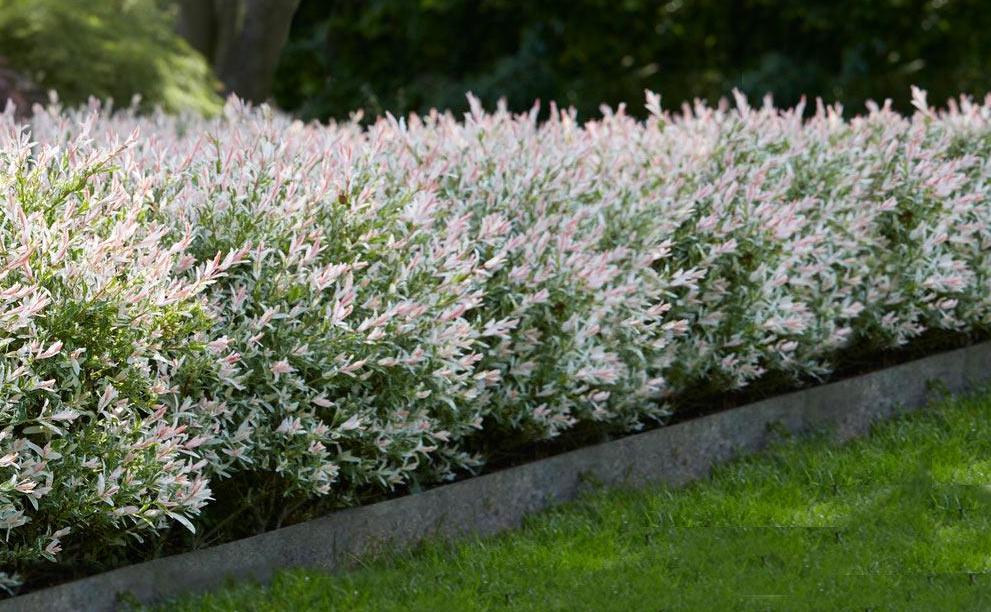
For something colorful and more unusual, the Dappled Willow is hard to beat. This pretty shrub creates a wonderful a privacy hedge and will grow quickly, up to eight to 10 feet.
It looks beautiful as an accent plant too. Its new growth emerges in a beautiful pink, which is offset by its light green and white foliage. It's a good looking option that you might want to use in a focal point in your yard, such as for patio privacy.
'This plant also likes a minimum of four hours sunlight per day and well-draining soil,' says Tamara. 'Prune back any broken branches in spring, before new growth begins.'
5. Holly (Ilex X 'Nellie R. Stevens')
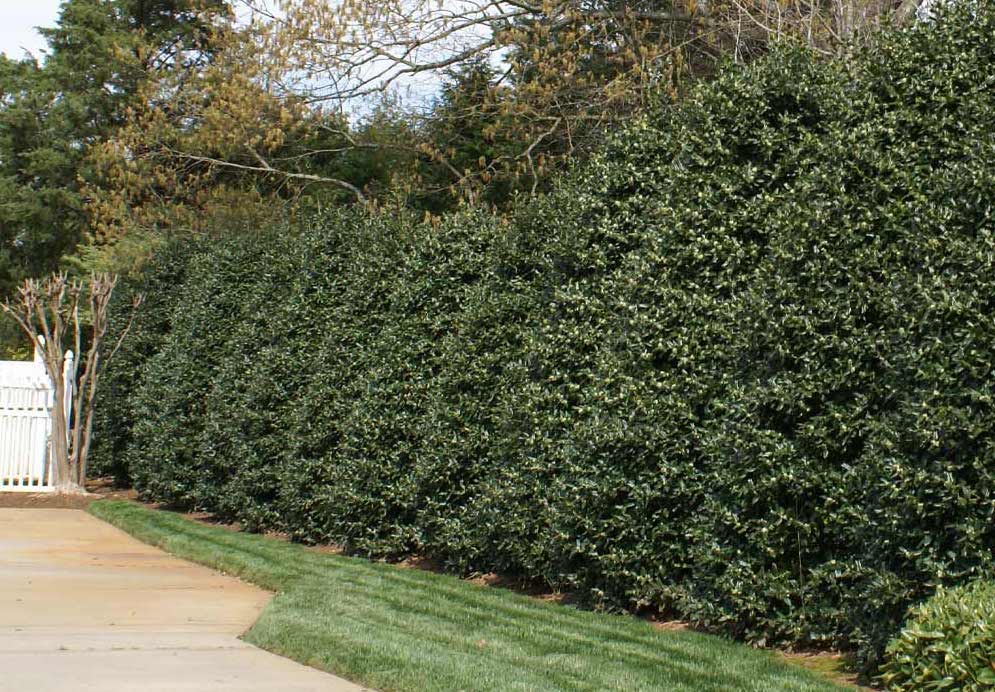
Holly ticks a lot of boxes when it comes to creating a living privacy fence. Not only does this gorgeous evergreen provide year-round color in your yard with its glossy green leaves and ruby red berries, it will attract birds - and may even deter unwanted intruders with its prickles.
There are numerous types of Holly too, from the tall Nellie Stevens with its elegant pyramidal shape to the compact Carissa Holly.
'My favorite Holly is the Nellie Stevens,' says Tamara. 'It's a great broadleaf evergreen that can provide great density in your privacy line. One of its biggest benefit is the flexibility you have with its size and shape.'
'If you wanted to shape it into a hedge, such as keeping it square, this is the plant for you. Prune it in late winter-early spring to clean up any branches that are growing out of shape.'
6. Skip Laurel (Prunus laurocerasus)
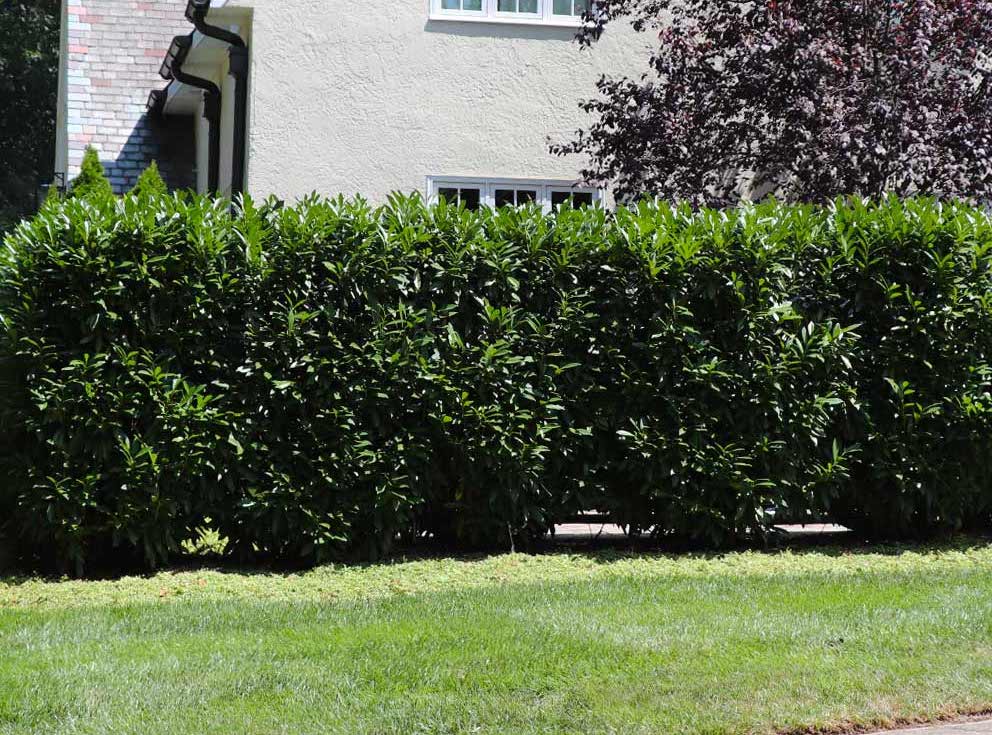
A low to virtually zero maintenance shrub, Skip Laurel makes a perfect living privacy fence for those with or without a green thumb. It is drought-tolerant, deer-resistant and adaptable to poor, dry soil, so it can create a wind break, privacy fence or barrier to traffic and noise wherever you live.
Additionally, Skip Laurel's dense, green foliage can be clipped into a hedge, or left in its natural shape, depending on the look you like.
'Skip Laurels don’t grow as quickly as some other plants, but they are still a great broadleaf evergreen choice,' says Tamara. 'These are a well-rounded privacy option for warmer climates, hardy in zone 5-10 and can take full sun to part shade.
'You can plant them, get them established, and let them do their job. If there is any pruning that needs to be done, it’s usually for touch ups rather than training purposes.' The perfect pick for a low maintenance garden.







